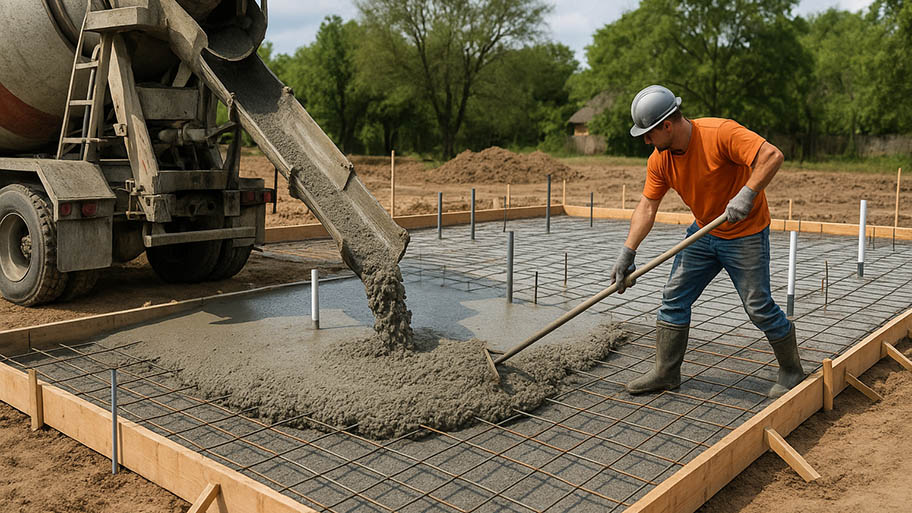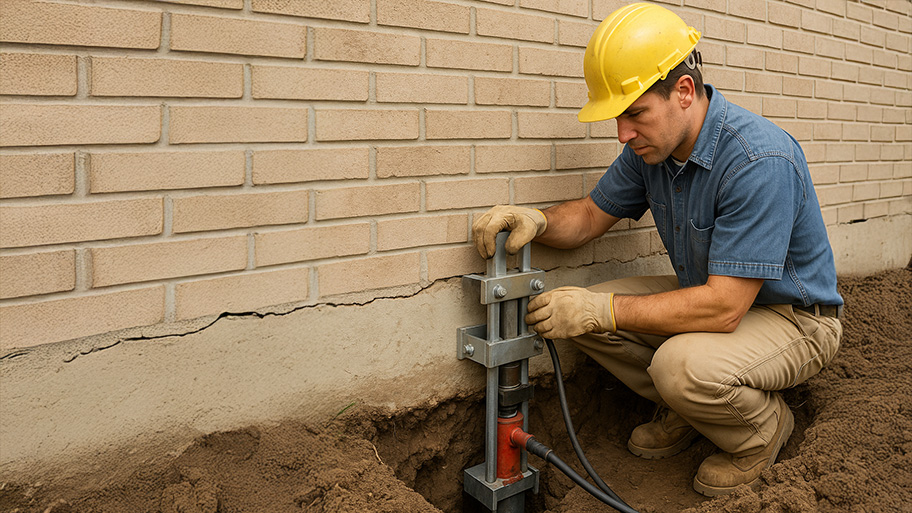
Crawl space maintenance can help improve indoor air quality and avoid structural damage. Learn how much crawl space cleaning costs and when to schedule it.
Crack the code to the perfect crawl space by checking out local requirements


Always review local building codes before designing or altering your crawl space.
Crawl space code requirements regulate ventilation, size, and encapsulation.
Proper crawl space design protects the area from moisture, pests, and freezing temperatures.
Codes may vary depending on your local climate and flood risk.
A crawl space is more than an escape tunnel in a spine-tingling, suspense-filled horror flick. It’s an essential part of your home built to protect you and your family from what lies on the ground below—which can also send shivers up your spine—and it must be kept up to code.
We’ve rounded up the standard crawl space requirements to keep your home dry, safe, sanitary, and legal.
The IRC designed a set of residential code requirements to ensure the construction of buildings are sanitary and safe for people who live inside. While the IRC doesn’t mandate local governments to uphold the codes, cities and counties use them as a model to develop their own construction codes.
Read on to learn crawl space requirements homeowners and foundation contractors need to follow.
Today, building codes allow for both vented and unvented crawl spaces, as long as they comply with code requirements. Originally, crawl spaces all required vents, but after building commissions learned they became a breeding ground for mold, rodent nesting, and rotted wood building materials, the laws changed. Unvented crawl spaces, however, require proper crawl space encapsulation to meet building codes.
Additionally, determining whether the crawl space vents stay open or closed depends on the season and the level of moisture in your climate year-round.
When crawl spaces don't house a vent, the contractor needs to place a Class 1 vapor retarder, insulation material, and the right size dehumidifier for the space. Dehumidifiers come in a variety of sizes based on square footage and humidity levels. Below, you’ll find new dehumidifier sizes necessary for ventless crawl spaces (older models are around 30-pints larger).
| Crawl Space Size (Sq. Ft.) | Dehumidifier Size | Humidity Levels |
|---|---|---|
| 300 | 20 pints | 50% – 70% |
| 25 pints | 70% – 80% | |
| 30 pints | 80% – 100% | |
| 500 | 25 pints | 50% – 60% |
| 30 pints | 70% – 80% | |
| 40 pints | 80% – 100% | |
| 800 | 25 pints | 50% – 70% |
| 30 pints | 70% – 80% | |
| 40 pints | 80% – 100% | |
| 1,200 | 50 pints | 50% – 70% |
| 55 pints | 70% – 80% | |
| 60 pints | 80% – 100% |
If your crawl space area measures larger than 1,200 square feet, just do the math! Consider hiring a pro to encapsulate (or seal) the space. Encapsulation costs an average of $5,000, depending on the size of your crawl space and the materials used.
Building codes foundation require crawl spaces to maintain outdoor ventilation between the ground and floor joists. If your crawl space is vented, you’ll need to install vents on all the walls.
The size of vents must be 1 foot for every 500 square feet or 1 foot for every 1,500 square feet when they house Class 1 vapor barriers that contain a 6-mil thick sheet of polyethylene.
Crawl spaces require access doors that are easy to get to in case of an emergency or the need for repairs. According to the IRC, the size of access doors for crawl spaces must measure 18-by-24 inches.
Crawl space floors need drains or sump pumps in the crawl space. They must be separate from foundation perimeter drains and gutters, and drain away from foundations.
The IRC now requires all crawl space entrances to measure a minimum of 16 inches high and 24 inches wide.
When using a Class 1 vapor retarder, you’ll need to install thermal insulation on the walls. Foam insulation boards placed in crawl spaces and attics must contain a thermal barrier, which safeguards crawl spaces from igniting a fire. Never use insulation materials that are porous on the ground since they absorb water.
The terms vapor barrier and vapor retarder are often used interchangeably, so it's easy to get them confused when insulating a crawl space. However, on a basic level, vapor barriers typically have stronger ratings for protecting a space from moisture compared to retarders.
Vapor barriers and retarders are broken down by thicknesses and permeability. These factors are measured in mils, or millimeters of thickness, and a perm rating, or the level of permeability in the material. In either case, most regulations will require a Class 1 vapor retarder, which means it has a perm rating of less than 0.1 perms.
Local regulations, how susceptible your crawl space is to moisture, and the nature of the crawl space will all determine your ideal mils and perm rating. It will also determine whether you need a professional or if you can learn how to install the vapor barrier in the crawl space yourself. Specialized types of vapor retardants include:
String-reinforced and unreinforced polyethylene
Aluminum liners
Rubber membranes
Glass
Sheet metal
In many cases, the inside of your crawl space will fall below the grade of the ground outside your home. In order to pass a basic basement inspection after construction, contractors may need to fortify the outside of the wall with damp-proof materials such as concrete, asphalt, brick, or mortar.
Depending on the extent of your crawl space encapsulation, you may need to also add insulation to pipes and ductwork. Not only does this protect the inside of these areas from the buildup of moisture from the cold, but it can lower utility bills and protect pipes from the potential of freezing.
Homes located in flood zones deal with additional crawl space code requirements. For one, at least one wall of the crawl space must be above grade to the exterior. Additionally, doors that allow flood water to exit the crawl space must be installed to keep water from potentially rising into your home.
On a more regular basis, you'll be required as a homeowner to keep your crawl space free of debris. Lawn cuttings, leaves, large rocks, and garbage must be kept out of the space for proper access. It is also important to stay ahead of mold remediation should moisture issues creep up.
If you’re buying, selling, or building a home, the right pro to hire for the job is a foundation contractor near you. These contractors will get down and dirty and crawl under your house to check things out. If you’re hiring a local home inspector they can take a quick look, but when there’s any doubt, they’ll recommend you call a foundation contractor.
I would recommend this company to anyone! He showed up on time, was friendly, completed a very difficult repair on our dryer vent cover, was responsive, and pricing was extremely fair and competitive. I would have him back to do any of our repairs or cleanings without hesitation!
Window depot replaced all 14 windows in my house, front door and added a new back door. They did a wonderful job with some tricky windows in this old house. They were quick but efficient and cleaned up everything inside and out. I have already passed their contact information on to my...
Great experience all together. Dog friendly, courteous, great results and honest with recommendations. Will certainly be using Cardinal in the future for any carpet repairs
We used Unique Hardwood Floor LLC three years ago to work on the floors of a 70 year old home that needed a great deal of work. Some floors needed repairs, some were replaced and others just needed to be refinished. It was a complicated job as they needed to blend the old and the new to...
Description says they handle window repair including rotten hardwood - they called me back right away but didnâ t leave a voicemail. I followed up 3 days later and they said they donâ t do that kind of work.
Had a ceiling collapse in my rental unit. Scott responded quickly to repair the ceiling in a timely manner.
Great, I did not have show up to the apartment and baby sit. He met with my tenant within the time frame promised, he repaired the appliance at a reasonable cost, and he communicated issues.
What a pleasure working with a professional organization that takes pride in its work and wants to ensure customer satisfaction. Out of the several quotes I received for the re-roof, Capps was not the cheapest, but I felt I could trust them to do an excellent job and I was not disappointed....
I had what looked like a failed hard drive on my laptop. Unable to boot, tried all the repair disks and could not get the laptop to start up. The laptop had been acting quirky and even had the blue screen of death before it failed to start up. Eric gave me the straight story on odds of...
My brother got information on this company while at the Garden Show at Cincinnati's Duke Energy Center a few weeks ago. A representative he spoke to suggested taking pictures of the chair he wanted re-upholstered and sending it to them via email for an estimate. He took pictures of the...
From average costs to expert advice, get all the answers you need to get your job done.

Crawl space maintenance can help improve indoor air quality and avoid structural damage. Learn how much crawl space cleaning costs and when to schedule it.

A foundation for a new-build home averages around $11,000. Find out all the factors that affect the cost of a foundation and how to save money.

Whether trying to protect it or transport it, raising a house is no small feat. Read on to find out everything you need to know about the cost to raise a house.

Which pole barn foundation option is best for your area and the size of the pole barn you’re building? Check out five of the most commonly used options.

Unsure if a crawl space or a basement foundation is better? Learn about the pros and cons of each, how they compare, and which is better for your home.

Can’t tell the difference between a footing versus a foundation? Learn how they differ and how to tell them apart in this guide to foundations and footings.